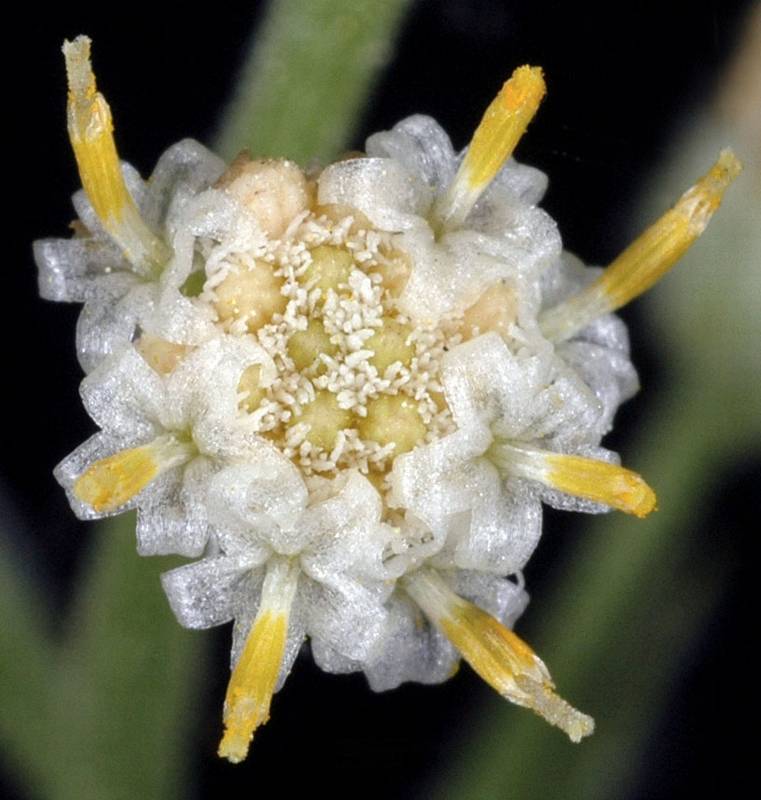Antennaria suffrutescens
Antennaria racemosa
Hooker's pussytoes, raceme pussytoes
Basal leaves short-petiolate with elliptic to elliptic-ovate blade1.5-8 cm. long and 1- 5 cm. wide, persistently white-woolly beneath, green and glabrous above;
cauline leaves narrower, sessile;
stems strongly glandular in the upper portion.
Heads on slender peduncles in a narrow, raceme-like inflorescence; staminate involucres 4-5 mm. high, but wider than the pistillate; pistillate 6-8 mm. high, strongly imbricate, the inner bracts narrow and elongate, pale greenish below, colorless and transparent to pale brownish above.
Achene terete
Antennaria suffrutescens
Antennaria racemosa
Widely distributed in mountainous areas on both sides of the Cascades crest in Washington; British Columbia to California, east to Alberta, Montana, and Wyoming.
- Local floras:
BC,
CA,
OR,
WA
- Local Web sites:
CalFlora,
CalPhotos,
Flora NW,
PNW Herbaria,
Turner Photog.
WildflowerSearch
iNaturalist (observations)
USDA Plants Database
- LBJ Wildflower Center
- SEINet
- Plants of the World Online
- Encyclopedia of Life
- Wikipedia
- Google Image Search


